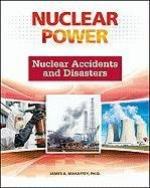|
This section contains 1,467 words (approx. 5 pages at 300 words per page) |

|
Of all the environmental disaster events that humans are capable of causing, nuclear disasters have the greatest damage potential. The radiation release associated with a nuclear disaster poses significant acute and chronic risks in the immediate environs and chronic risk over a wide geographic area. Radioactive contamination, which typically becomes airborne, is long-lived, with half-lives guaranteeing contamination for hundreds of years.
Concerns over potential nuclear disasters center on nuclear reactors, typically those used to generate electric power. Other concerns involve the transport of nuclear waste and the temporary storage of spent radioactive fuel at nuclear power plants. The fear that terrorists would target a radiation source or create a "dirty bomb" capable of dispersing radiation over a populated area was added to these concerns following the 2001 terrorist attacks on New York City and Washington, D.C.
Radioactive emissions of particular concern include strontium-90 and...
|
This section contains 1,467 words (approx. 5 pages at 300 words per page) |

|


